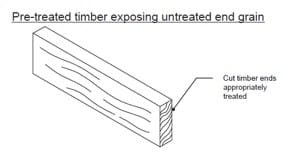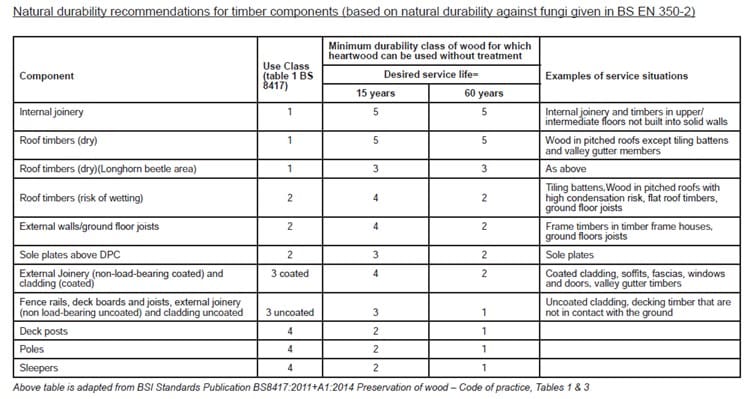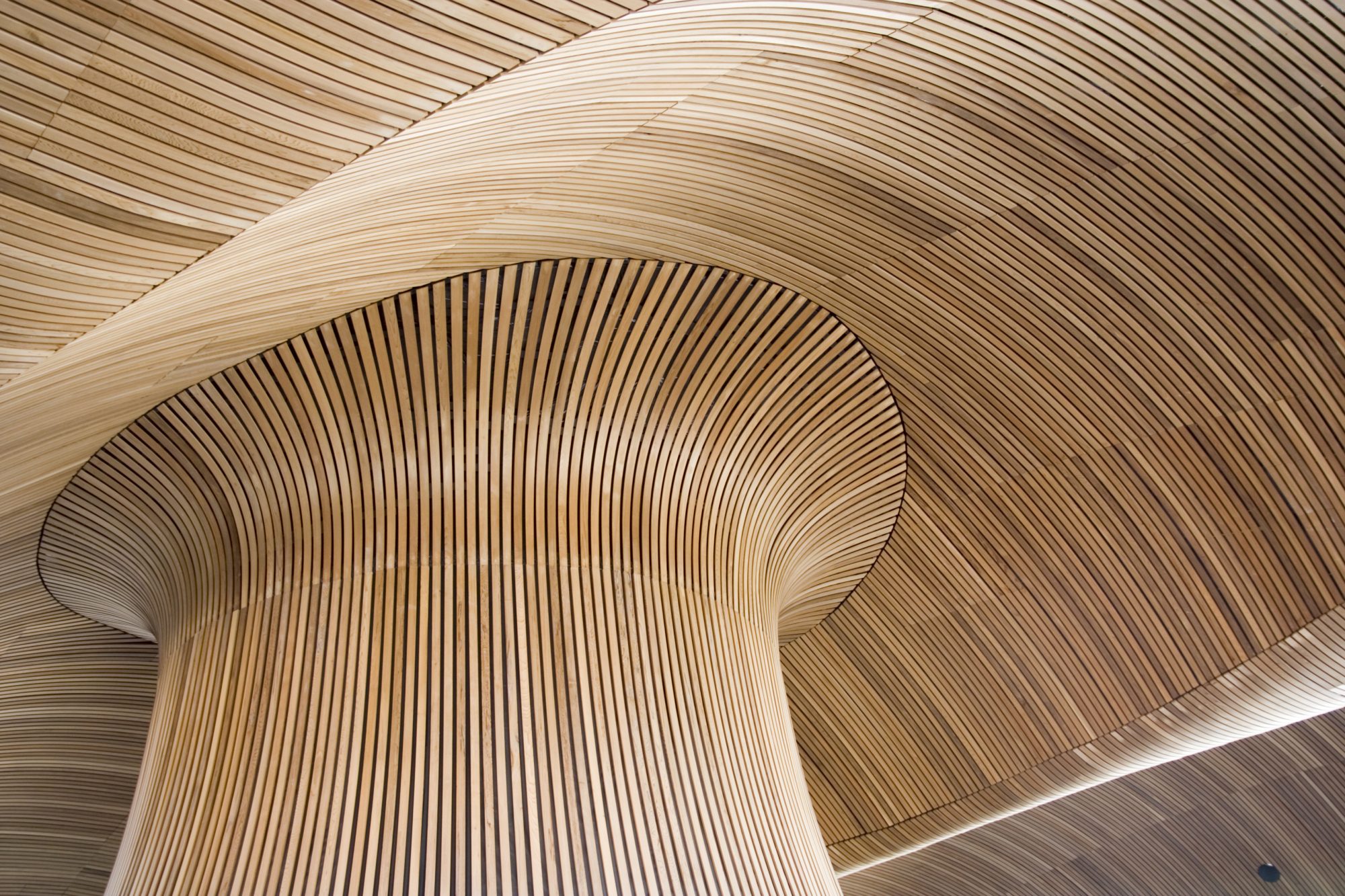Curious about which specification of timber can be used externally, or what the durability designations actually mean? Premier Guarantee’s Technical Manual has everything you need to know
Timber has a wide range of uses within construction, however it can be confusing when you’re trying to specify the correct type.
In order to ensure the correct timber is chosen, both the durability and use class need to be considered.
It’s important that timber which is chosen is suitable for the location, weather and environment. In addition, if the timber is to be treated, it should be suitable for the intended use.
Understanding timber durability
The durability class is the ability of the timber of a given species to resist decay and infestation by insects. The timber durability class of a given species gives a good estimate of how long the timber will last and it is measured in years.
It is important to note that timber durability classes relate only to the heartwood of any species and not the sapwood which is considered class 5, non-durable for all species of timber.
Heartwood relates to the inner dead part of a stem or trunk and it provides the structural support for the tree. The sapwood is youngest part of the stem or the trunk and it transports nutrients and sap. The durability classes do not however taken into account other factors such as moisture, temperature, competency of the installation.
TRADA defines five durability classes for timber and they are:
| Durability Class | Designation | Timber life |
| 1 | Very Durable | 25+ years |
| 2 | Durable | 15-25 years |
| 3 | Moderately Durable | 10-15 years |
| 4 | Slightly Durable | 5-10 years |
| 5 | Not Durable | 0-5 years |
The above should only be used as a guideline as local conditions and some of the factors discussed above can play a role in timber durability, however in general, more durable timber species will last longer than less durable species of timber.
TRADA have a useful webpage which lists different wood species and their durability class; it can be accessed from the TRADA website.
Please note, although oak is considered to be in a durability class of 2-4 we do not accept its use in all circumstances, particularly where it forms part of the external wall of a structure. For further information, please see Appendix C of our Technical Manual. Your warranty surveyor should be informed as soon as possible if you intend on using oak in your project.
The use class of the timber should be carefully considered
The end use of the preservative-treated timber is classified into 5 categories by BS EN 335-1 and is widely used in the construction industry to help determine the level of treatment (more on that below) that is required based on the environment the timber is to be used (or its use class).
| Use Class | General Use Situation |
| 1 | Interior, dry |
| 2 | Interior, dry, occasional but not persistent wetting. Condensation of water on the wood may occur |
| 3 | Exterior, above ground, exposed to the weather. Sub-divided into: 3.1 Limited wetting conditions (coated) and 3.2 Prolonged wetting conditions (uncoated) |
| 4 | Exterior in ground contact and/or fresh water. |
| 5 | Permanently or regularly submerged in salt water |
The right treatment process can add up to 60 years to the service life
Preservative treatment provides natural wood with additional durability. However, not all pressure treated wood is the same, the level of preservative protection could be very different. That’s because the British Standard for wood preservation – BS 8417, requires that the loading and penetration of preservative, impregnated into the wood, is tailored to the desired end use (the above use classes). Two main types of treatment processes exist, these are high pressure and low pressure.
High Pressure vacuum treatment is good for getting timber suitable for external use and it can provide the timber with a 15-60 year service life. The preservatives are forced deep into the cellular structure of the wood and additional additives can be added to change the colour of the timber or to aid in water repellency.
Double vacuum low pressure treatment is used for use classes 1, 2 and 3.1 (Coated) and can deliver a service life between 30-60 years. The treatment provides an effective envelope of protection around the timber.
As per the guidance in our Technical Manual: BS 8417 should be used when determining the preservative treatment required. Tables 1 to 3 of BS 8417 must be referred too to identify ‘Use classes, ‘Service Factor code’ and durability class of wood for the desired service life.
Please note, it is important that any pre-treated timber be re-treated if it is cut to expose untreated end grain. The treatment should be coloured so it can be proven that the end grain has been treated.

The below table has been taken from Appendix C of our Technical Manual and it shows various timber components, their minimum natural durability recommendations for a desired service life of 15 or 60 years and their use class.

Understanding timber durability and service life will help you secure the correct warranty
For warranty purposes, building elements will require to achieve a minimum ‘service life’ depending where in the structure it is and its function. Please refer to the table at the end of Appendix C1 of our Technical Manual for further guidance when identifying the minimum durability class of wood.
For timber that is used externally, the most appropriate durability class, use class and preservative treatment to BS 8417 should be specified based on the required service life.
How long can structural floor boards for timber joists be left exposed on site?
Understanding timber durability and treatments means you not only install the correct product for a project, but also understand how to handle it on site.
When considering how long structural floor boards can be left exposed on site, it’s important to consider the functional requirements, which state:
- All materials should be stored, installed and protected correctly in a manner that will not cause damage or deterioration of the product
- All materials, products and building systems shall be appropriately tested and approved for their intended purpose
With this in mind, structural floor boards should be stored, installed and protected as per the manufacturer’s instructions. However, as structural floor boards are built in as the work proceeds they may be left exposed to the elements and they will be subjected to various issues, especially during prolonged periods of precipitation.
Check your third party product approval certificate for weather resistance
For warranty purposes, structural floor boards for timber joists that are to be installed as the building proceeds and left exposed must have a third party product approval certificate which covers weather resistance for the period of time the boards are to be left exposed on site.
Any boards that are left exposed beyond the period stated in the third party approval certificate should be replaced.

















